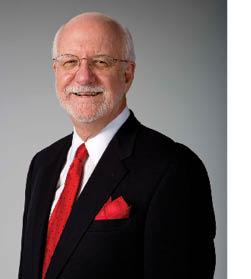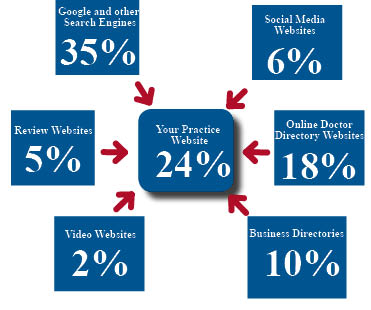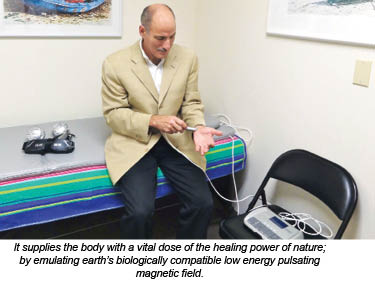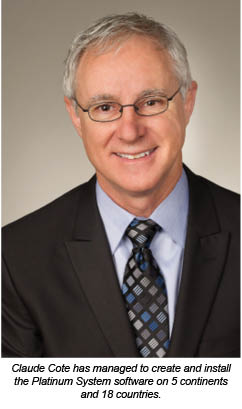:dropcap_open:E:dropcap_close:dward (Ned) Hallowell, M.D., ED. (Hon., 2005), a child and adult psychiatrist, author and graduate of Harvard College and Tulane Medical School, is the founder of The Hallowell Centers in Sudbury, Massachusetts and New York City. He was a member of the Harvard Medical School faculty from 1983 until he retired from academics in 2004 to devote his full professional attention to his clinical practice, lectures, and the writing of books.

Dr. Hallowell is a highly recognized speaker around the world and has presented to thousands on topics such as ADHD, strategies on handling your fast-paced life, the Childhood Roots of Adult Happiness, family and health issues and how to help your employees SHINE. Dr. Hallowell has also authored eighteen books on various psychological topics, including his national best sellers on ADD, Driven to Distraction, Answers to Distraction and Delivered from Distraction.
Dr. Hallowell lives in the Boston area with his wife, Sue, a social worker, and their three children, Lucy, Jack and Tucker. His greatest loves is spending time with them, doing whatever they want to do. Each year the family spends one month at the aptly-named Lake Doolittle where they connect and slow down.
The American Chiropractor (TAC) finally caught up with Dr. Hallowell to discuss the program he is putting together to teach chiropractors how to better deal with this fragile demographic in the following interview.
TAC: Dr. Hallowell, thank you for taking the time to meet with us. Can you tell us some of the basic understandings that you have about ADD and how you’ve come to those findings?
DR. HALLOWELL: I’m a child and adult psychiatrist, I’m sixty-one years old, and I’ve been in practice now for some thirty years. I have both what’s called ADHD and dyslexia myself, and over the course of three decades of working with individuals who have it, I’ve come to see these conditions more as traits than disabilities. Depending upon how you manage them they can disable you or, quite the opposite, they can actually have beneficial aspects that prove to be assets. Therefore I now say to people, “I don’t treat disabilities, I help people unwrap their gifts.”
TAC: So your position is this is a genetic predisposition that one has. Have you heard some of these other theories that it’s from toxic exposure or environmental issues? And how would you respond to someone who says that’s the cause?
DR. HALLOWELL: The evidence is clear that in about ninety percent of instances, this trait is genetically transmitted. You can also acquire it through head injury, through anoxia at birth, through lead poisoning, but the vast majority of ADHD is simply a trait you’re born with. If you learn to manage it properly it can serve you very well. But if you don’t, well, at its worst, that’s the prison population. What makes this trait so interesting is that it can lead a person in a positive direction or a very negative one. You can rise to the heights with ADHD or you can live a marginalized, underachieving existence.
One of the reasons I’m so excited to bring what I’ve learned about ADHD to chiropractors is that people are increasingly going to chiropractors to get help. Not being a chiropractor myself, I don’t know how chiropractic works with ADHD, but I do know that more people are looking to chiropractors for help with this condition than ever. So it’s exciting for me to take what I know and hand it to chiropractors and say, “Let’s work together.”
TAC: You mentioned that you like to focus mostly on the modification of how to treat individuals with ADD. Could you explain a little about those procedures?
DR. HALLOWELL: The starting point is make the diagnosis. Think of ADHD when you see a child or adult who is underachieving, who is frustrated, who can’t get organized, can’t stay on track, where grades in school or performance in the work place are less than inborn talent would dictate, for example, a sixth grader who’s constantly getting comments to “try harder” or “you’re so much smarter than your grades reflect, we know you have talent, why don’t you get organized and get your act together,” or an adult who’s getting the same feedback in the workplace, “You’re our most creative person, why can’t you ever show up on time?” or “Why do you have to blurt out such annoying remarks” or “Why can’t we rely on you? You’ve got so much talent.” Those kinds of comments are not helpful, and they reflect what I call a “moral” diagnosis, variations on the theme of ‘you’re defective, you’re weak, you need to try harder’ and it’s a ‘character problem’ you’ve got. That’s very, very damaging. These people over time gradually can get beaten down. They can become depressed, angry, turn to drugs, and become marginalized. It’s tragic to see.

The first step is to say, “No, look, this is a neurological issue, this is a wiring issue that has nothing to do with will power and character and has everything to do with wiring.” Just that basic reframing makes a huge difference. You see kids stand up taller, their parents lean back, and it’s the same with adults. I say, “You’re very lucky, you’ve got a Ferrari engine for a brain. You’ve got a racecar up there, an incredibly powerful brain. The problem is you’ve got bicycle brakes, so you can’t control this incredibly powerful engine that you’ve got, so you crash into walls, you run through stop signs, you miss things you’d like to see.” And I say, “Well, I’m a brake specialist. I’m going to help you learn how to stop; I’m going to help you learn how to control the incredibly powerful engine you’ve got.” And that really is what ADHD is all about, it’s essentially a condition of disinhibition. You can’t inhibit incoming stimuli, hence you’re very distractible, and you can’t inhibit outgoing impulses, hence you’re impulsive and sometimes disruptive or hyperactive. So the trick is—without sacrificing the power of the engine—to help children or adults learn to control the racecar, learn how to modify and modulate their central nervous system so they are able to win races instead of crashing into the wall.
TAC: Are these methods of dealing with individuals with ADHD easily learned by any group of people, like mothers, or is this something that only healthcare professionals can participate in?
DR. HALLOWELL: Everyone can learn how to help unwrap the gifts. I’m just now making a series of instructional videos for school teachers, for example. Absolutely, teachers should learn about it, parents should learn about it. Then there is the role, of course, for professionals, and that’s where I’m eager to see what chiropractors will do with this in terms of the holistic approach they take. The majority of the interventions anyone can learn. They have to do with the obvious—sleep, diet exercise, meditation, positive human contact (people often forget the importance of positive human contact. Often these folks get nothing but reprimands all day long) and then structure. The critical importance of adding structure to your life: a get up time, a time to go to bed time, lists, reminders, staying on track. These folks, regardless of whether they’re six years old or sixty, they know what to do, they just don’t do it because they forget or they get sidetracked, or they get distracted. So structure in its various forms—and you need to be creative to fit the person’s individual needs—structure makes a tremendous difference.
TAC: Because it sounds to me that almost everybody falls into this category at some point or another. How do you really effectively diagnose who really has it and who doesn’t?
DR. HALLOWELL: A good analogy is the difference between sadness and depression. Everyone is sad now and then, but only a small fraction of the population is depressed. So it’s the intensity and the duration of the symptoms that makes the diagnosis. Everyone is distractible or impulsive at times, but the question is how distractible compared to a cohort of your peers, how impulsive compared to a cohort of your peers, and is it getting in your way in life, are you underachieving because of it? Again, the analogy with depression: if you’re very sad for a long time and it’s causing you to lose ground in school or work, we call that depression. If you’re sad for a few days because something bad happened in your life, we call that normal life. The same is with the symptoms of ADHD: are you much more distractible or impulsive than a cohort of your peers and is it leading you to underachieve? If the answer is ‘yes’, then that’s ADHD. It’s a question of intensity and duration of symptoms and are they leading you to underachieve in your life.
ADHD is a really good news diagnosis because this is a diagnosis where people turn their lives around, whether in school with children or adults in marriage. They go from struggling to soaring. It’s really quite a remarkable turnaround when you see it happen. Folks go from feeling downtrodden and frustrated, and angry, and being told constantly to shape up to suddenly being able to go from a ‘D’ to an ‘A’, or an adult going from being the night watchmen, as one of my patients did, to being the manager of the plant. You can really turn your life around with this diagnosis, and that’s why I say it’s a good news diagnosis. Once the diagnosis is made the worst is over, things will only get better.
TAC: How do you view the role of Ritalin as a treatment method in the model that you use?
DR. HALLOWELL: You know, people ask me if I believe in Ritalin and my answer is, “It’s not a religious principal.” It’s not a matter of belief, it’s an option that’s available, and obviously chiropractors are offering an option that does not include medicine. This is great, because many, many people are eager to find solutions without using medication. There’s a great deal of need these days for effective interventions, effective treatments that do not involve medication.
 TAC: Would you say the incidence of ADHD is becoming more frequent, or are we diagnosing it more frequently?
TAC: Would you say the incidence of ADHD is becoming more frequent, or are we diagnosing it more frequently?DR. HALLOWELL: I don’t think the incidence of true ADHD is on the rise. It’s a combination of factors: number one, due to better education we are diagnosing it properly more often. On the other hand, there’s modern life—we’ve really seen such dramatic change even in the past decade. We live in an age of distraction and interruption, so I think there’s a lot of what I call ‘pseudo-ADD’ out there, not true ADD but it looks like it, and I think we’ve got to be careful not to assume those people have ADD. You can do the Vermont test: take someone and put them on a farm in Vermont and come back in a month. If they’re quietly plowing the fields then it wasn’t ADD, but if they’ve turned the farm into an amusement park then it was ADD. The point being that one is context dependent. You can basically say that modern life is ‘ADDogenic’—you can look like you have it and not have it at all. So turn off your cell phone, turn off your Blackberry, and have family dinner instead of sitting in front of the television and suddenly you will start focusing.
TAC: What could a chiropractor expect in using this program your proposing?
DR. HALLOWELL: I think that’s where I’m leaving that in the hands of the chiropractors. In other words, I can tell you what I’ve learned, and that’s what I’ve put into the videos, and then you build on that. We both offer each other what we’ve got and then we say, “Why don’t you try this with that?” and I say, “Why don’t you try that with this?” and I think in the collaboration we’ll discover things that neither group knew before. The key to it all is to be open-minded and not territorial, and I think that separated for too long MDs from chiropractic, and I think it’s sort of a turf issue, and that, I think, is ridiculous. We’re all in this life together trying to help people and there’s plenty of business to go around. We want to pool our knowledge. Everybody should offer the best they’ve got, and then everybody wins.
TAC: Absolutely. It’s all for the benefit of the patient. Now, how profoundly do you recognize diet as being a factor?
DR. HALLOWELL: It’s tremendous. Nutrition is huge, sleep is huge, and physical exercise may be the single most important thing of all, and meditation as well. These physical factors are huge, absolutely huge.
TAC: Do you also have extra reading material?
DR HALLOWELL: I urge people to get my book called Delivered from Distraction. If they don’t have time to read the whole book, the first chapter is called “The Skinny on ADD: Read this if you don’t have time to read the whole book.”
TAC: Is there anything else you can think of that you’d like to make sure our doctors or their patients know?
DR. HALLOWELL: I’d like them to learn more. If your article can whet their appetite, go to one of my books or get the program, because this is a really fun condition to work with. These patients improve, and they’re grateful. Everybody wins. As opposed to some chronic pain syndrome that may be not so much fun, these folks are really, really fun to work with because they improve by leaps and bounds, and they’re usually adventurous, fun people. I would urge chiropractors to learn about this and make it a subspecialty, because it’s very, very rewarding.
TAC: How can people learn more about the program you’re putting together for chiropractors?
DR. HALLOWELL: We are creating a website, and we’re going to be presenting at some chiropractic meetings. We haven’t started marketing it yet because we’re still in the process of creating the videos. I’m thrilled to be doing this; it’s something I want to bring to practitioners of all kinds. I’d like to reach people who are working in many different fields because this is a common trait, depending upon what numbers you look at we’re talking between five and fifteen percent of the population, so it’s common, and the good news is that when it’s dealt with properly these folks can be extraordinarily productive, but when it’s not they languish, they struggle. As I stated, at its worst untreated ADHD leads to violence, crime, and prison.
TAC: Fabulous. Well, we’re excited. Thank you for your time, Dr. Hallowell.
DR. HALLOWELL: Thank you. Take care.
 Dr. Fuhr was three years into his practice, and had been adjusting a high volume of patients using a thumb thrust generated by bringing the elbows together with quick force. But after long days of using his thumb to make contact, and snapping his elbows together, the wear and tear was taking its toll. In the morning, he would soak his elbows in hot water to loosen up the joint ligaments, and at night he would ice them by kneeling in front of the sink.
Dr. Fuhr was three years into his practice, and had been adjusting a high volume of patients using a thumb thrust generated by bringing the elbows together with quick force. But after long days of using his thumb to make contact, and snapping his elbows together, the wear and tear was taking its toll. In the morning, he would soak his elbows in hot water to loosen up the joint ligaments, and at night he would ice them by kneeling in front of the sink.  “That engineer taught me a valuable research lesson: You cannot force an academic to do anything he or she is not naturally interested in to begin with,” Dr. Fuhr remarks. “Fortunately, the engineer was quite compelled by what we had created, and went
“That engineer taught me a valuable research lesson: You cannot force an academic to do anything he or she is not naturally interested in to begin with,” Dr. Fuhr remarks. “Fortunately, the engineer was quite compelled by what we had created, and went 

 To understand McDonald’s success and learn from it, there is only one marketing concept that you need to “own,” and with it you will achieve great success, albeit with one proviso. That concept is quite simple, “Do not double the people you know, double the people that know you.” The idea is so profoundly simple that all it takes is either a lot of your time and no money with a door-to-door campaign to introduce yourself to your community or a little time and lots of money with an advertising campaign. Both work because this is a numbers game. Eventually, someone with a spinal-related problem will need a chiropractor and if you happen to be “in their face” at the right time, your phone will ring. However, when you meet people one on one, the return is higher.
To understand McDonald’s success and learn from it, there is only one marketing concept that you need to “own,” and with it you will achieve great success, albeit with one proviso. That concept is quite simple, “Do not double the people you know, double the people that know you.” The idea is so profoundly simple that all it takes is either a lot of your time and no money with a door-to-door campaign to introduce yourself to your community or a little time and lots of money with an advertising campaign. Both work because this is a numbers game. Eventually, someone with a spinal-related problem will need a chiropractor and if you happen to be “in their face” at the right time, your phone will ring. However, when you meet people one on one, the return is higher. 


 “Maintaining chiropractic health keeps me conditioned for racing,” says Wagner. “I feel better mentally and physically, and I’m more confident just knowing I’m prepared for the physical burden this sport demands.”
“Maintaining chiropractic health keeps me conditioned for racing,” says Wagner. “I feel better mentally and physically, and I’m more confident just knowing I’m prepared for the physical burden this sport demands.” “Davey Hamilton has taught me a lot about the race car and has led by example away from the track, too.”
“Davey Hamilton has taught me a lot about the race car and has led by example away from the track, too.” Brandon will need strong backing and financial support to achieve these lofty goals. With all of the skill of an A.J. Foyt and the charisma of a Dan Wheldon, he is poised to garner that support. It will be a huge story for an Indiana-born and raised, grass roots driver to elevate to the most famous race on the planet and his fan base will explode as they find him to be a most humble, but most deserving, young talent. After a short meeting with him, you will agree that he is an extremely centered and grounded young man with full comprehension and respect for his God-given talent and finely tuned ethics.
Brandon will need strong backing and financial support to achieve these lofty goals. With all of the skill of an A.J. Foyt and the charisma of a Dan Wheldon, he is poised to garner that support. It will be a huge story for an Indiana-born and raised, grass roots driver to elevate to the most famous race on the planet and his fan base will explode as they find him to be a most humble, but most deserving, young talent. After a short meeting with him, you will agree that he is an extremely centered and grounded young man with full comprehension and respect for his God-given talent and finely tuned ethics.

 From my experience, a profound advantage to utilizing PEMF therapy over other chiropractic therapeutic modalities is its versatility in how it can be applied to the body. The iMRS system is able to provide powerful localized or regional treatment utilizing the probe or the pillow application as well as allowing for whole body global wellness with the mat application. Additional advantages are that patients do not need to disrobe as the therapy penetrates through clothing and is safe as well as user friendly. The iMRS technology is so easy to use that many of my patients are easily trained to operate and apply the therapy to themselves. Patients have even purchased the system through me for home use!
From my experience, a profound advantage to utilizing PEMF therapy over other chiropractic therapeutic modalities is its versatility in how it can be applied to the body. The iMRS system is able to provide powerful localized or regional treatment utilizing the probe or the pillow application as well as allowing for whole body global wellness with the mat application. Additional advantages are that patients do not need to disrobe as the therapy penetrates through clothing and is safe as well as user friendly. The iMRS technology is so easy to use that many of my patients are easily trained to operate and apply the therapy to themselves. Patients have even purchased the system through me for home use! TAC: Do you ever receive skepticism when you suggest its use to patients?
TAC: Do you ever receive skepticism when you suggest its use to patients?
 Manipulative Medicine, and the Orange County Neurological Society. He is currently chairman of the Research Council of the World Federation of Chiropractic. He serves as President of World Spine Care, a non-profit organization with the goal of helping people in underserved regions of the world who suffer from spinal disorders. He sits on the editorial boards of eight journals. He has published over 200 articles or book chapters, over 70 scientific abstracts, and has authored or edited 8 books.
Manipulative Medicine, and the Orange County Neurological Society. He is currently chairman of the Research Council of the World Federation of Chiropractic. He serves as President of World Spine Care, a non-profit organization with the goal of helping people in underserved regions of the world who suffer from spinal disorders. He sits on the editorial boards of eight journals. He has published over 200 articles or book chapters, over 70 scientific abstracts, and has authored or edited 8 books. TAC: Can you tell me how Primary Spine Clinicians would assist with informed consent for care?
TAC: Can you tell me how Primary Spine Clinicians would assist with informed consent for care? TAC: Is this project in need of funding, or is this something that needs participants to volunteer their time and energy?
TAC: Is this project in need of funding, or is this something that needs participants to volunteer their time and energy?
 TAC: Mr. Cote, for the benefit of our readers, could you introduce yourself and speak about your company:
TAC: Mr. Cote, for the benefit of our readers, could you introduce yourself and speak about your company: software companies. Let’s say a doctor buys a certified software system. Then, after, he will have to pay for service. After he is in with certification, the doctor cannot back off or he will have to reimburse the incentive. Then, what prevents software companies from raising his service fees to maintain certification? A new job called HIT, which stands for Health Information Technology, has been created to help doctors implementing all the meaningful use objectives with their certified software system. But these guys are not free.
software companies. Let’s say a doctor buys a certified software system. Then, after, he will have to pay for service. After he is in with certification, the doctor cannot back off or he will have to reimburse the incentive. Then, what prevents software companies from raising his service fees to maintain certification? A new job called HIT, which stands for Health Information Technology, has been created to help doctors implementing all the meaningful use objectives with their certified software system. But these guys are not free.
 To ensure that the voice of the chiropractic profession is heard by lawmakers, the American Chiropractic Association (ACA) will host the 2012 National Chiropractic Legislative Conference (NCLC) with the Chiropractic Summit Feb. 15-18 in Washington, D.C. In a historic first, the 41 organizations that make up the Chiropractic Summit will come together to help set the direction of NCLC.
To ensure that the voice of the chiropractic profession is heard by lawmakers, the American Chiropractic Association (ACA) will host the 2012 National Chiropractic Legislative Conference (NCLC) with the Chiropractic Summit Feb. 15-18 in Washington, D.C. In a historic first, the 41 organizations that make up the Chiropractic Summit will come together to help set the direction of NCLC. 

 Dr. Hallowell is a highly recognized speaker around the world and has presented to thousands on topics such as ADHD, strategies on handling your fast-paced life, the Childhood Roots of Adult Happiness, family and health issues and how to help your employees SHINE. Dr. Hallowell has also authored eighteen books on various psychological topics, including his national best sellers on ADD, Driven to Distraction, Answers to Distraction and Delivered from Distraction.
Dr. Hallowell is a highly recognized speaker around the world and has presented to thousands on topics such as ADHD, strategies on handling your fast-paced life, the Childhood Roots of Adult Happiness, family and health issues and how to help your employees SHINE. Dr. Hallowell has also authored eighteen books on various psychological topics, including his national best sellers on ADD, Driven to Distraction, Answers to Distraction and Delivered from Distraction. The first step is to say, “No, look, this is a neurological issue, this is a wiring issue that has nothing to do with will power and character and has everything to do with wiring.” Just that basic reframing makes a huge difference. You see kids stand up taller, their parents lean back, and it’s the same with adults. I say, “You’re very lucky, you’ve got a Ferrari engine for a brain. You’ve got a racecar up there, an incredibly powerful brain. The problem is you’ve got bicycle brakes, so you can’t control this incredibly powerful engine that you’ve got, so you crash into walls, you run through stop signs, you miss things you’d like to see.” And I say, “Well, I’m a brake specialist. I’m going to help you learn how to stop; I’m going to help you learn how to control the incredibly powerful engine you’ve got.” And that really is what ADHD is all about, it’s essentially a condition of disinhibition. You can’t inhibit incoming stimuli, hence you’re very distractible, and you can’t inhibit outgoing impulses, hence you’re impulsive and sometimes disruptive or hyperactive. So the trick is—without sacrificing the power of the engine—to help children or adults learn to control the racecar, learn how to modify and modulate their central nervous system so they are able to win races instead of crashing into the wall.
The first step is to say, “No, look, this is a neurological issue, this is a wiring issue that has nothing to do with will power and character and has everything to do with wiring.” Just that basic reframing makes a huge difference. You see kids stand up taller, their parents lean back, and it’s the same with adults. I say, “You’re very lucky, you’ve got a Ferrari engine for a brain. You’ve got a racecar up there, an incredibly powerful brain. The problem is you’ve got bicycle brakes, so you can’t control this incredibly powerful engine that you’ve got, so you crash into walls, you run through stop signs, you miss things you’d like to see.” And I say, “Well, I’m a brake specialist. I’m going to help you learn how to stop; I’m going to help you learn how to control the incredibly powerful engine you’ve got.” And that really is what ADHD is all about, it’s essentially a condition of disinhibition. You can’t inhibit incoming stimuli, hence you’re very distractible, and you can’t inhibit outgoing impulses, hence you’re impulsive and sometimes disruptive or hyperactive. So the trick is—without sacrificing the power of the engine—to help children or adults learn to control the racecar, learn how to modify and modulate their central nervous system so they are able to win races instead of crashing into the wall. TAC: Would you say the incidence of ADHD is becoming more frequent, or are we diagnosing it more frequently?
TAC: Would you say the incidence of ADHD is becoming more frequent, or are we diagnosing it more frequently?
 Today, this reading is considered Stage 1 of high blood pressure. Anything over 120/80 is now considered pre-hypertension. Based on these numbers about 65 million or one out of three adults have high blood pressure while another 59 million have pre-hypertension. The arbitrary assignment of what constitutes high blood pressure by the AMA and their pharmaceutical cohorts has allowed otherwise normal healthy people to be coerced into taking drugs they do not need and, in fact, are dangerous!
Today, this reading is considered Stage 1 of high blood pressure. Anything over 120/80 is now considered pre-hypertension. Based on these numbers about 65 million or one out of three adults have high blood pressure while another 59 million have pre-hypertension. The arbitrary assignment of what constitutes high blood pressure by the AMA and their pharmaceutical cohorts has allowed otherwise normal healthy people to be coerced into taking drugs they do not need and, in fact, are dangerous!  Patient Drug Survey: Dr. Frank’s first order of business was to request Erma bring in every prescription and OTC drug she was taking, especially her blood pressure meds. He classified each drug as to (1) its purpose; (2) mode of action; (3) dosage; and (4) side effects. He could now determine which of Erma’s complaints were health-related and which were the results of drug side effects.
Patient Drug Survey: Dr. Frank’s first order of business was to request Erma bring in every prescription and OTC drug she was taking, especially her blood pressure meds. He classified each drug as to (1) its purpose; (2) mode of action; (3) dosage; and (4) side effects. He could now determine which of Erma’s complaints were health-related and which were the results of drug side effects.